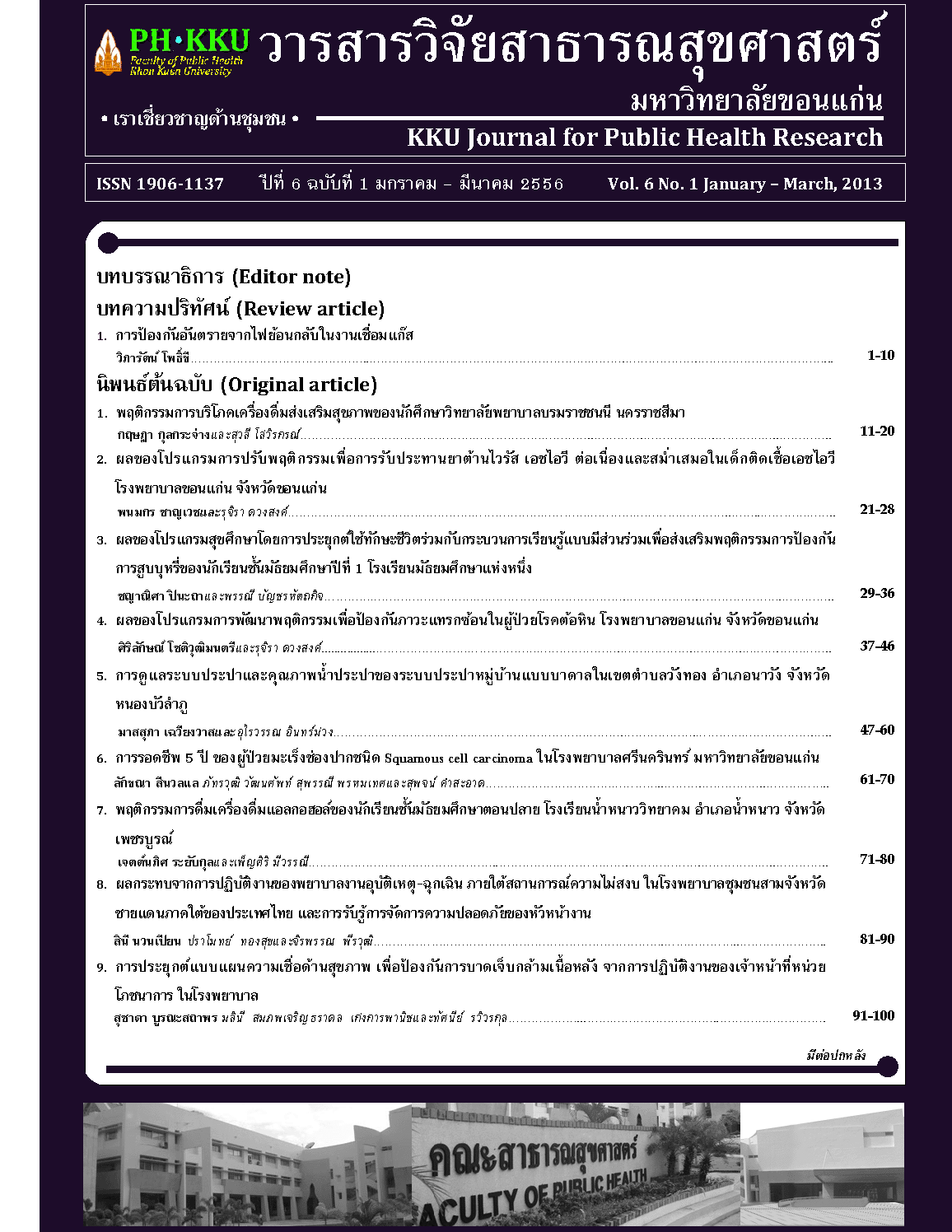การประยุกต์แบบแผนความเชื่อด้านสุขภาพเพื่อป้ องกันการบาดเจ็บกล้ามเนื้อ หลังจากการปฏิบัติงานของเจ้าหน้าที่หน่วยโภชนาการในโรงพยาบาล
คำสำคัญ:
แบบแผนความเชื่อด้านสุขภาพบทคัดย่อ
Work-related back muscle pain was a common problem among workers in a
hospital’s Nutrition Unit. The purpose of this study was to explore the results of the
application of health belief model for prevention of work-related back muscle
injuries. The subjects consisted of 30 workers in a hospital’s Nutrition Unit who
were responsible for preparation of food for patients. They were selected by
purposive sampling. The sample size was calculated by power analysis. The workers
were provided with the back muscle injuries prevention program for totally 4 times
as follows: Group discussion, experience sharing, skill practice of safe lifting, and
meeting arrangement for supervisors to give reminder message. The data collection
during pre-experiment and post-experiment took a total of 8 weeks. Average scores
of perception on each aspect of the subjects after the experiment were as follows:
Perceived susceptibility and perceived severity to back muscle injuries were higher
than before the experiment with a statistical significance, perceived benefits of
behaviors for prevention of back muscle injuries was higher than before the
experiment with a statistical significance, perceived self-efficacy in behaviors for
prevention of back muscle injuries and behaviors for prevention of back muscle
injuries were higher than before the experiment with a statistical significance (pvalue<
0.001), and back muscle pain was relieved with a statistical significance(pvalue=
0.005). However, average scores of perceived barriers to behaviors for
prevention of back muscle injuries were lower, but the difference was not
statistically significant (p–value> 0.05). According to the study, the application of
health belief model for work-related back muscle injuries prevention contributed to
changes in behaviors for prevention of work-related back muscle injuries in respect
of ergonomics among workers in a hospital’s Nutrition Unit. Therefore, the findings
of the study encouraged the subjects to have knowledge and understanding about
work-related back muscle injuries, and perform behaviors for prevention of back
muscle injuries, so as to work safely and apply to their daily lives.


